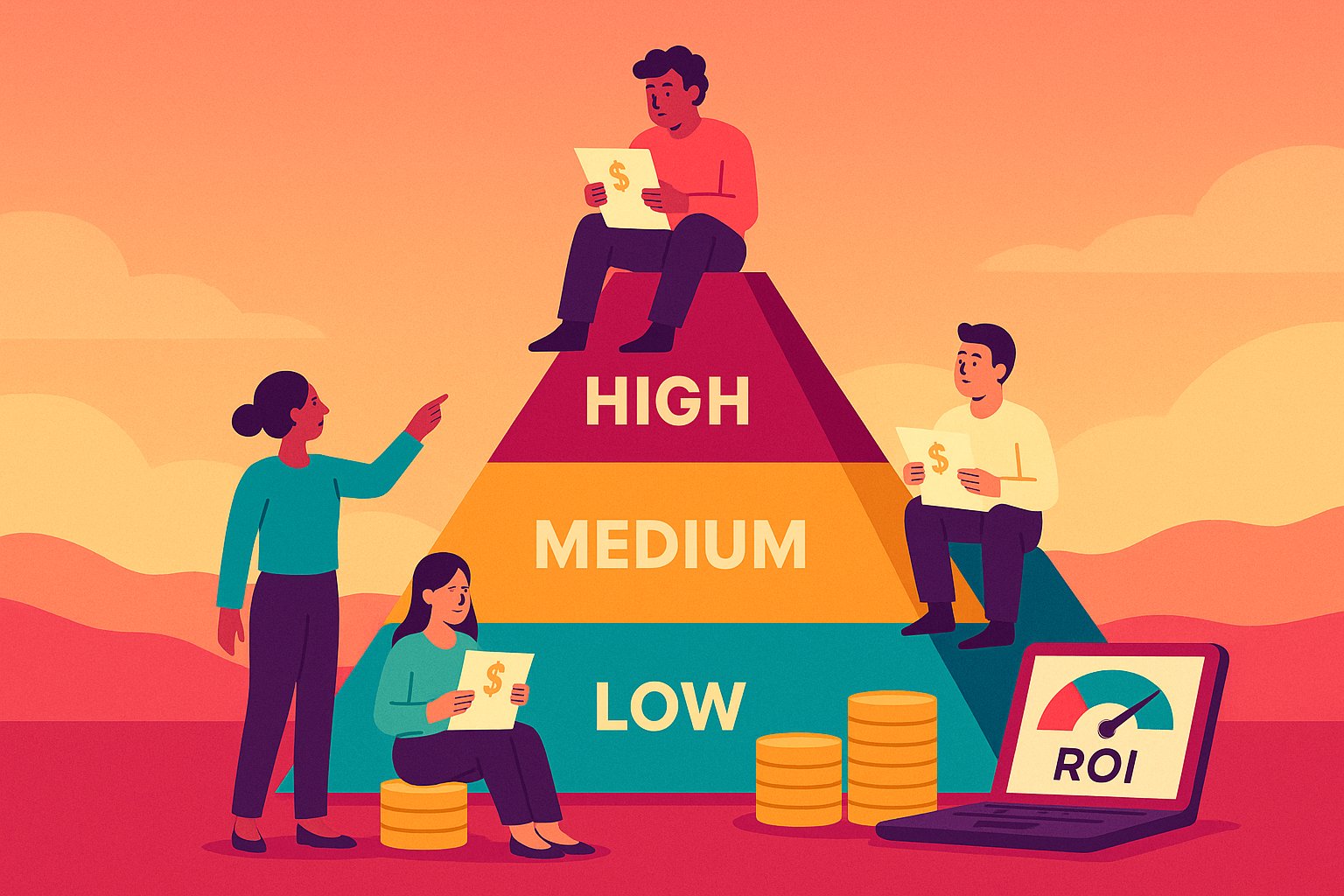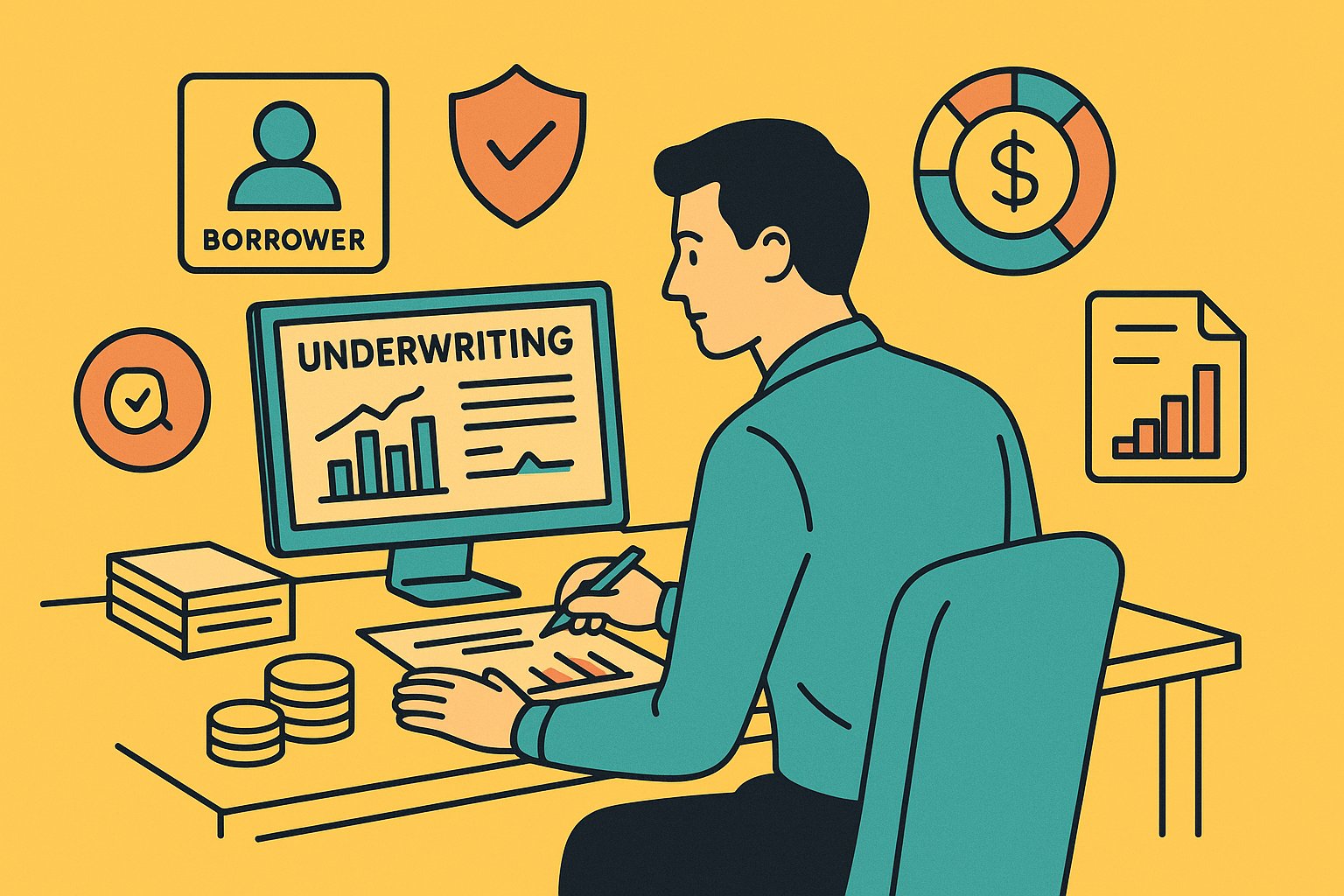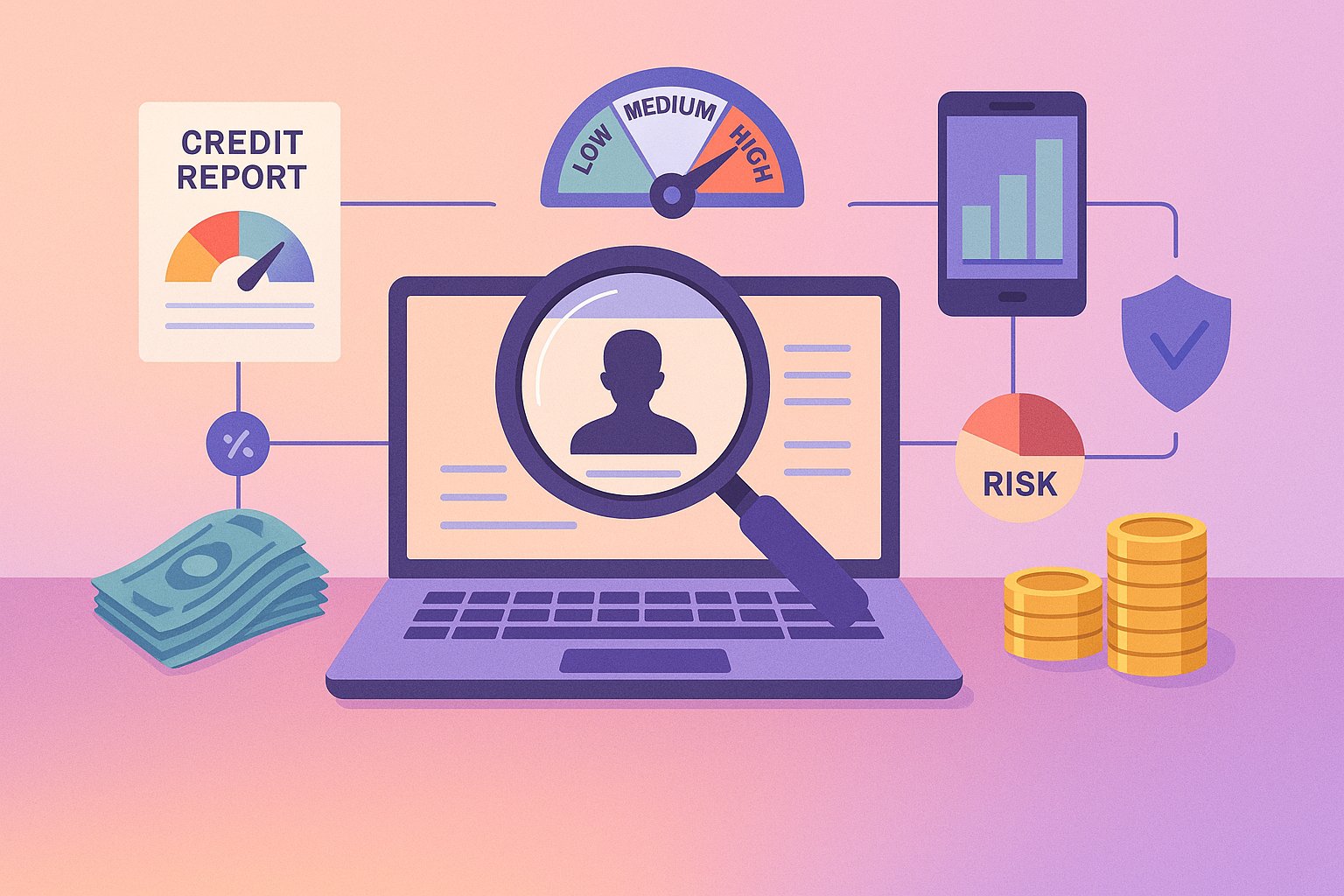Mapping the Terrain of P2P Lending Risk
Peer-to-peer lending campaigns have revolutionized the way individuals and small businesses access capital. Unlike traditional banking systems, these platforms connect borrowers directly with individual lenders, creating a decentralized marketplace that promises greater returns for investors and more accessible financing for borrowers. However, navigating this terrain requires a keen understanding of the varying levels of risk that underpin every loan. Risk tiers serve as a crucial compass, guiding investors toward opportunities that align with their appetite for potential reward and their tolerance for possible loss. In this exploration, we’ll delve deep into the nuances of risk tiers in peer-to-peer lending campaigns, uncover how platforms categorize borrowers, and discuss strategies for both lenders and borrowers to work within this dynamic environment.
Anatomy of Risk Tiers in Lending Platforms
Every peer-to-peer lending platform develops its own methodology for evaluating borrower creditworthiness and grouping loans into risk tiers. At the foundation lie traditional credit metrics—credit scores, income verification, debt-to-income ratios, and sometimes employment history. But beyond these core factors, many platforms layer on additional data points to refine risk categorization. Alternative data sources, such as utility payment histories, rental payment records, and even social media analytics, are increasingly leveraged to paint a more comprehensive picture of a borrower’s financial behavior.
These data-driven processes typically result in a ranking scale. For example, a platform might assign letters from A to G, where A represents the lowest risk (and correspondingly lower interest rate) and G indicates the highest risk (and higher interest rate). Each letter or numeric tier reflects a band of expected default probabilities based on historical data. As a result, investors browsing available loans can instantly compare multiple listings and make informed decisions based on the associated risk tier. Understanding how these tiers are constructed and what variables feed into them is essential; it can reveal hidden nuances in a borrower’s profile that standard credit scores alone might not capture.
How Platforms Define and Assign Categories
Different peer-to-peer lenders approach risk assessment with distinct philosophies, but most share a common structure. They begin by collecting an applicant’s credit report and score from major credit bureaus. Simultaneously, they analyze financial statements or bank statements for self-employed individuals. An algorithm then processes this financial data alongside supplementary indicators—employment stability, prior loan performance (if applicable), and even geographic risk factors, such as regional economic trends.
Once this algorithmic model produces a numerical or categorical score, the platform places the borrower into one of several risk buckets. In many cases, these buckets correspond directly to interest rate brackets. For instance, loans classified in Tier A might carry a 6%–8% interest rate, while Tier G could carry 20% or higher. By staking their capital into a Tier G loan, an investor effectively wagers on a borrower whose likelihood of default is statistically greater, but who may also yield a significant return if repayments proceed smoothly.
Some platforms go a step further by continuously monitoring borrower behavior. If a borrower’s credit score changes—or if late payments occur—their risk tier may be adjusted mid-term. This dynamic tiering can affect the secondary market price of a loan. As a result, investors in secondary markets must stay vigilant, because a sudden downgrade in risk classification can lead to a steep discount if they decide to sell the loan note before maturity.
The Impact of Risk Tiers on Expected Returns
When investors evaluate lending opportunities, risk tiers serve as a proxy for expected return and volatility. Lower-tier loans (e.g., Tier A or B) typically demonstrate a low probability of default. Consequently, they promise more modest interest rates—often in the single digits. These loans are appealing to conservative investors seeking stable, predictable cash flows, even if returns are muted. In contrast, higher-tier loans (for example, Tier F or G) can command interest rates exceeding 15% or even 20%. This potential for high yield attracts investors willing to shoulder a greater chance of losing part—or all—of their principal.
However, the mathematical expectation of return isn’t as straightforward as “high interest minus default rate equals profit.” Investors must consider platform fees, servicing fees, and potential recovery of defaulted loans. Many P2P platforms charge late fees or collection fees if borrowers miss payments, and these fees can either pad investor returns slightly or diminish them if collection efforts succeed only partially. Additionally, economic conditions play a significant role. In times of economic downturn, default rates in higher-tier categories may spike, collapsing expected returns. Thus, savvy investors often use a diversified strategy—allocating capital across multiple tiers to balance yield aspirations against the risk of widespread defaults.
Creative Investor Strategies for Mitigating Risk
Successful navigation of risk tiers begins with a disciplined allocation strategy. Instead of placing all capital in a handful of high-yielding, high-risk loans, many seasoned investors spread their funds across dozens or even hundreds of loans. By doing so, they minimize the idiosyncratic risk that any single borrower will default. Patience also proves vital—holding loans to maturity often yields better performance than attempting to trade in secondary markets, where prices can fluctuate based on shifting risk perceptions.
Another approach involves selective reinvestment. When borrowers in higher risk tiers demonstrate timely payments over the early months of the loan term, some platforms automatically re-evaluate their risk profile. If they shift into a lower risk bucket, the investor can choose to keep the loan, benefiting from a reduced probability of future default. Conversely, if early payment behavior is spotty but not yet in default, an investor might choose to exit the position in the secondary market, locking in a partial recovery rather than waiting for a potential default.
Additionally, certain platforms provide statistical tools that visualize overall portfolio risk. For instance, an investor can simulate how a 2% increase in default rates across all Tier C loans would affect expected returns. This forward-looking analysis helps investors proactively adjust their allocation mix before adverse economic trends materialize. Leveraging these analytics tools effectively can be the difference between a modestly profitable year and a portfolio-wide loss.
Borrower Perspectives: Elevating Your Risk Profile
On the flip side of risk tiering, borrowers seeking optimal terms must understand the factors that drive their classification. While credit scores and income stability remain foundational, borrowers can actively improve their profiles. Consistently making on-time payments on existing credit lines—credit cards, car loans, or mortgages—helps bolster credit scores. Some platforms allow applicants to link bank accounts or provide access to transaction histories, enabling automated verification of income and spending habits. By demonstrating stable cash flow and a history of prudent financial behavior, borrowers can nudge their risk tier downward, potentially saving thousands in interest over the life of a loan.
Transparency also plays a critical role. A borrower who explains anomalies—such as a one-time medical expense that temporarily dented their cash reserves—can sometimes receive special consideration. Some platforms feature a narrative component wherein borrowers describe their purpose for the loan and outline their repayment strategy. Well-crafted narratives that address potential concerns head-on can tip the scales in favor of a lower risk designation.
Furthermore, borrowers who build relationships with specific platforms by taking smaller loans first and repaying them in full can establish a track record that may qualify them for better terms on subsequent loans. Essentially, they become known entities within the platform’s data ecosystem. Over time, this positive repayment history feeds into the algorithmic model, yielding a better risk tier and lower interest cost.
The Role of Technology in Shaping Risk Tiers
Advancements in machine learning and alternative data gathering have transformed risk assessment in P2P lending. Traditional underwriting methods relied heavily on backward-looking metrics, such as historical credit performance. Today’s platforms incorporate real-time data streams, analyzing transactional behavior, seasonal income patterns, and even geospatial data—such as delinquencies in a borrower’s neighborhood—to refine risk predictions. For instance, if a borrower lives in a region that has recently experienced a significant uptick in unemployment claims, sophisticated models might interpret that as a signal for heightened credit risk.
Moreover, some innovative platforms augment credit scores with psychometric testing. By gauging a borrower’s decision-making tendencies and attitudes toward risk, lenders claim they can predict default likelihood more accurately than with standardized credit metrics alone. While this approach remains relatively niche, its potential to revolutionize risk tier calibration is significant. As these models evolve, they may democratize credit even further, enabling underserved populations with thin credit files to access financing at competitive rates.
Blockchain technology also looms on the horizon. Decentralized protocols promise greater transparency and security in loan origination and servicing. Smart contracts could automate interest payments and collateral management, reducing administrative costs and minimizing the risk of human error. Over time, these efficiencies may translate into tighter interest spreads for borrowers and better risk-adjusted returns for investors.
Economic Cycles and Risk Tier Performance
No discussion of risk tiers would be complete without acknowledging the influence of macroeconomic factors. During periods of economic expansion, default rates across all risk categories tend to remain subdued. Borrowers enjoy stable employment and rising equity values, making it easier for them to service debt. Investors therefore earn close to—or even slightly above—expected returns. However, business cycles inevitably swing toward contraction, and it is in these downturns that risk tiers reveal their true character.
Higher risk tiers can implode quickly when unemployment rises or consumer confidence plummets. Borrowers who appeared to have manageable repayment plans during boom times may struggle to find work or see their supplemental income sources vanish. As delinquencies climb, investors might see a domino effect that leads to widespread losses. By contrast, lower risk tiers often weather recessions more gracefully. Borrowers in Tier A or B are more likely to have higher incomes, greater reserves, and more diversified revenue streams—buffers that help them remain solvent even in turbulent times. It is this asymmetry that explains why a portfolio heavily weighted toward low risk tiers can provide a safe harbor during economic storms, even if it sacrifices some upside during bull markets.
Looking Ahead: The Future of Risk Layering
Peer-to-peer lending is still a relatively young asset class, and risk models continue to adapt. In the coming years, we can expect platforms to integrate even more granular data—such as payment histories for gig economy workers, climate-related risk factors, and predictive indicators derived from artificial intelligence. Regulatory landscapes will also evolve: governments are beginning to scrutinize P2P platforms, imposing stricter transparency and consumer protection standards. As a result, risk tiers may become more standardized across platforms, making it easier for investors to compare opportunities on a like-for-like basis.
In parallel, a convergence of fintech and traditional finance could pave the way for hybrid models. Some banks have already started partnering with peer-to-peer platforms, using their proprietary underwriting capabilities to secure portfolios before selling fractions of loans to retail investors. This hybridization may blur the lines between risk categories, compressing interest spreads for borrowers and reducing the volatility of returns for investors.
Lastly, social and environmental factors are gaining prominence in credit assessment. Impact investing mandates are pushing platforms to consider borrowers’ contributions to sustainability, diversity, and community development. These nonfinancial criteria could lead to the emergence of new risk tiers—ones that reward borrowers for demonstrating positive societal impact, even if their traditional credit metrics are borderline. Such innovations could attract a new generation of values-driven investors who seek both financial returns and measurable social good.
Charting Your Course in P2P Lending
Understanding risk tiers in peer-to-peer lending campaigns is not merely an academic exercise; it is a strategic imperative for anyone participating in this burgeoning marketplace. For investors, mastering the interplay between interest rates, default probabilities, and economic cycles can unlock the potential for both stable and exceptional returns. For borrowers, embracing transparency, leveraging alternative data, and building a strong repayment history can yield more favorable terms and greater access to capital. As technology continues to refine risk assessment and regulatory frameworks mature, the P2P lending landscape will only grow richer and more nuanced.
Whether you’re an investor seeking above-market yields or a borrower aiming to finance your next venture, educating yourself about risk tiers will empower you to make informed decisions. Embrace the analytics tools, stay attuned to economic signals, and cultivate a disciplined approach to portfolio allocation or credit enhancement. By doing so, you can navigate the intricate layers of peer-to-peer lending with confidence—transforming risk into opportunity and forging new pathways to financial success.




